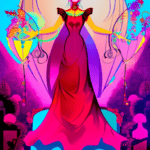The Killing by Stanley Kubrick
One-line Summary:
A group of criminals plan and execute a meticulously orchestrated racetrack heist, but their perfect plan begins to unravel due to unforeseen circumstances and the greed of those involved.
Main Cast and Crew:
- Director: Stanley Kubrick
- Writer: Stanley Kubrick, Jim Thompson
- Key Actors: Sterling Hayden as Johnny Clay, Coleen Gray as Fay, Vince Edwards as Val Cannon, Jay C. Flippen as Marvin Unger, Elisha Cook Jr. as George Peatty, Marie Windsor as Sherry Peatty
- Music Director: Gerald Fried
- Director of Photography: Lucien Ballard
- Producers: James B. Harris, Stanley Kubrick
Plot:
Johnny Clay, a recently released convict, plans an elaborate racetrack heist with the help of a diverse group of criminals. The plan involves stealing $2 million during a horse race at a racetrack. Johnny recruits Marvin Unger, a corrupt cop, to provide inside information and ensure a smooth operation. George Peatty, a cashier at the racetrack, is manipulated into assisting the gang by his manipulative and unfaithful wife, Sherry.
As the plan unfolds, the film explores the lives and motivations of the characters involved. Johnny’s meticulous planning and attention to detail are put to the test as unforeseen circumstances and the greed of those involved threaten to derail the heist. The film employs a non-linear narrative structure, jumping back and forth in time to reveal the events leading up to and following the heist.
Themes and Motifs:
“The Killing” explores themes of greed, betrayal, and the corrupting influence of money. The characters’ motivations are driven by their desire for wealth and their willingness to betray others to achieve their goals. The film also delves into the concept of fate and the idea that no matter how carefully a plan is crafted, unforeseen events can disrupt even the most meticulous schemes.
Kubrick’s signature visual style is evident throughout the film, with his use of deep focus cinematography and long tracking shots. The film’s non-linear narrative structure adds to the sense of tension and suspense, as the audience is kept in the dark about certain key events until the final act.
Reception and Legacy:
Upon its release in 1956, “The Killing” received mixed reviews from critics. While some praised Kubrick’s direction and the film’s intricate plot, others found it confusing and overly stylized. Despite its initial reception, “The Killing” has since gained recognition as a classic film noir and a significant entry in Kubrick’s early filmography.
The film’s influence can be seen in subsequent heist films, with its intricate plotting and exploration of the criminal mind. It is often cited as a precursor to Kubrick’s later masterpieces, showcasing his talent for crafting complex narratives and exploring the darker aspects of human nature.
Recommendation:
“The Killing” is a must-watch for fans of film noir and Stanley Kubrick’s work. Its intricate plot, memorable characters, and stylish direction make it a compelling and suspenseful crime thriller. The film’s non-linear structure and attention to detail will keep viewers engaged from start to finish.
Memorable Quote:
“Alright, Johnny, I’m sorry. It was my fault. I should’ve known you can’t shake hands with a clenched fist.” – Fay












